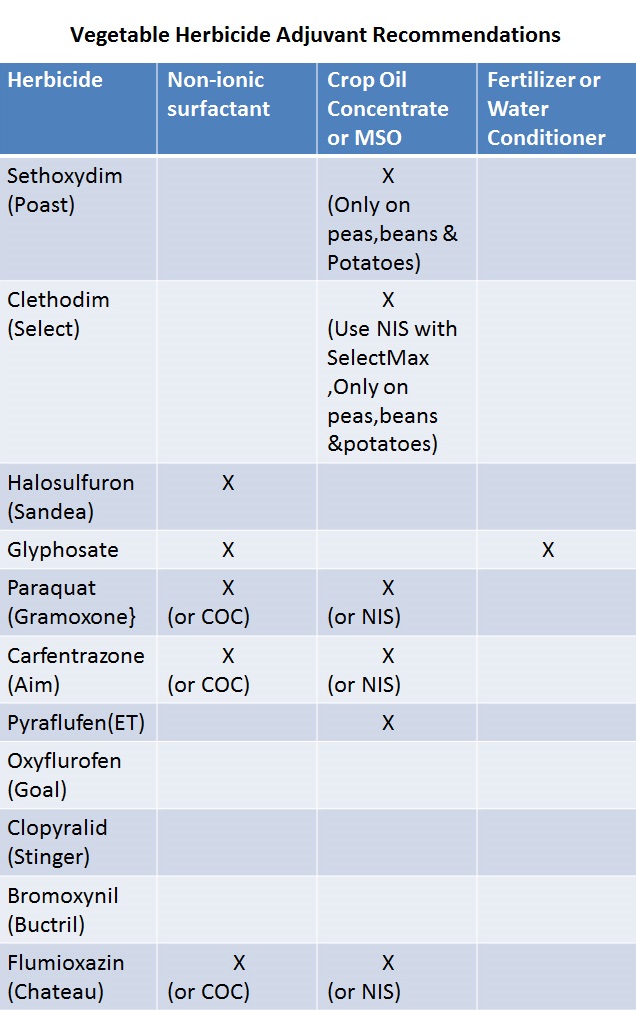
|
|
|
|

|
|||
|
|
|||
|
|
|||
|
An adjuvant is a substance that is in a herbicide formulation or added to the spray
tank to modify herbicidal activity or application characteristics. These can be
divided into spray modifiers which include spreaders and stickers,
anti-foaming agents, drift control agents and others that are used to alter the
physical characteristics of the spray solution and activator agents
which include surfactants (surface active agents), Crop oil concentrates and water
conditioners including fertilizers. Some adjuvants are included in the formulation
by the manufacturer and some are required to be added to that spray tank by the
applicator. There are thousands of products on the market and many of them include
more than one type of adjutant. Applicators are commonly confused by all of these
and the diverse uses that they were developed for. There are not many herbicides
registered for use on vegetable crops and most of them use pre-emergence herbicides.
Adjuvants are generally used only with post emergence herbicides. There are some
people who think that adjuvants can be useful with pre-emergent herbicides but in
seven trials we have not found evidence of this. At the risk of oversimplification,
the following chart is intended to help with some of the confusion associated with
this subject. It includes only postemergence herbicides registered for use in the
production of vegetable crops.

To contact Barry Tickes go to: btickes@ag.arizona.edu.
|
|||
| Back | |||
|
For questions or comments on any of the topics please contact Marco Pena at the Yuma Agricultural Center.
|
|||
|
Home |
Cotton | Veggies |
Forages | Grains
| Citrus |
Crop x Crop Insects | Diseases| Weeds | Pesticides | Economics | News | Weather | Research | Photos | Contacts | General Info. Copyright © 2001 University of Arizona, College of Agriculture and Life Sciences Webmaster: Al Fournier (acis@ag.arizona.edu) |
|||
